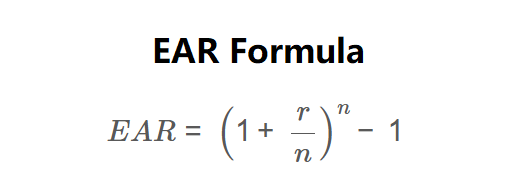 Home
Home
 Back
Back

Definition: The Effective Annual Rate (EAR) is the actual interest rate that an investor earns or pays in a year after accounting for compounding.
Purpose: EAR provides a way to compare different investment or loan options with different compounding periods on a consistent basis.
The calculator uses the following formula:
\[ EAR = \left(1 + \frac{r}{n}\right)^n - 1 \]
Where:
Steps:
Calculating EAR is essential for:
Example 1: Calculate EAR for a nominal rate of 8% compounded quarterly
Example 2: Calculate EAR for a nominal rate of 5% compounded monthly
Q: What's the difference between nominal rate and EAR?
A: Nominal rate doesn't account for compounding, while EAR shows the actual annual rate including compounding effects.
Q: Does more frequent compounding always mean higher EAR?
A: Yes, for a given nominal rate, more frequent compounding results in a higher EAR.
Q: What's the maximum possible EAR for a given nominal rate?
A: As compounding frequency approaches infinity, EAR approaches e^r - 1 (continuous compounding).